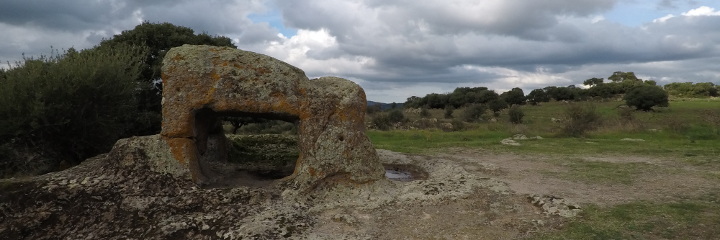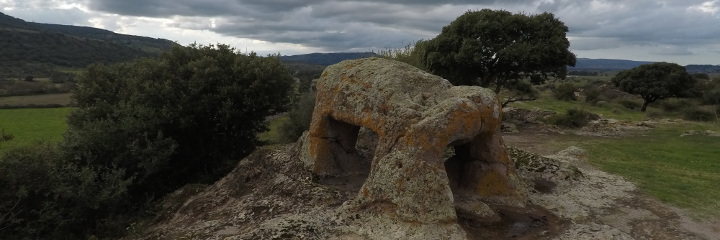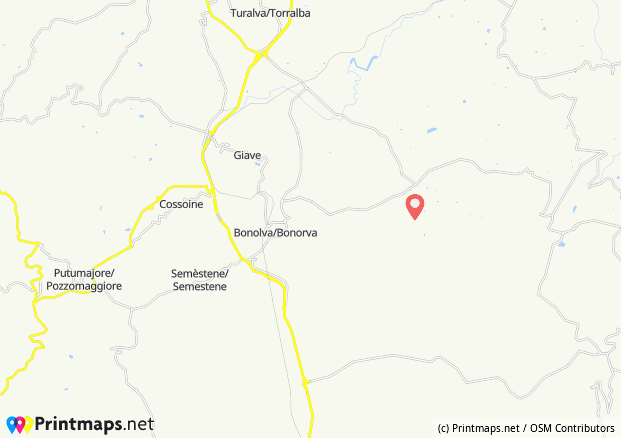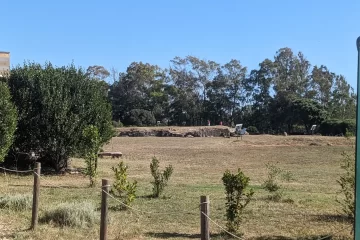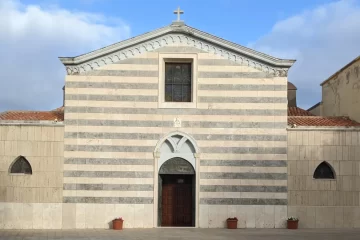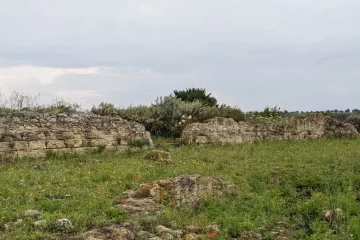Let’s go back to the Valle dei Nuraghi once again, to discover another place of great importance: the site of Sant’Andrea Priu.
The place is known for the stupendous neolithic necropolis, one of the most grandiose complexes of domus de janas in Sardinia; here, however, we will also find works dating back to successive historical periods: testimonies that will make us relive the passing of time, between different eras.
Towards the necropolis
From the village of Bonorva, we reach the site by heading east, via secondary roads. The necropolis, dug in a ridge of trachyte, is located near the small valley of the Rio Mannu stream. We are surrounded by a very relaxing rural environment.
Access to the necropolis is paid, with guided tour.
The guide gives us access from the gate along the road; from here we can observe the small accesses to the numerous tombs carved into the rock (domus de Janas).
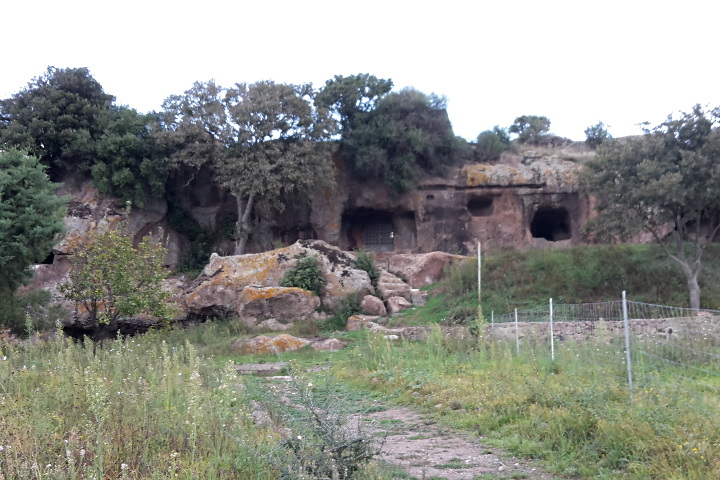
On our right, recent excavation activities are bringing to light the remains of buildings of the Roman era; an important town with thermal baths was built in this area.
The visit
We follow the path that leads us close to the slope; approaching the entrances of the tombs, we recognize the small rooms, typical of the ancient Sardinian necropolis.
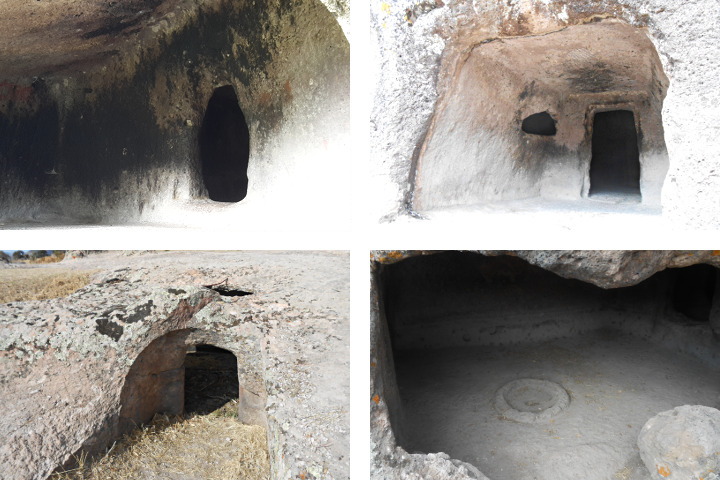
The guide leads us to the tomb known as the handsome chief’s tomb, which is very large (about 250 square meters) and contains many artistic treasures.
When we cross the entrance, finally we can observe the structure… There are 18 rooms including three main rooms, where we can walk freely; around the main rooms there are other smaller cells, originally used for burial purposes.
The first main room preserves numerous traces dating back to the Neolithic period. We can see the brazier on the floor (certainly reused also in later periods) and the incisions on the ceiling; according to experts, these represent the roof of a hut and make us perceive the importance that the concept of “home” began to assume already in this age.
As we continue our journey in the second main room, the hands of time take us to another era… The walls are decorated with surprising frescoes of the Roman period! Among these, the delicate representation of a woman stands out for its elegance; probably this was the portrait of a prominent figure in society and confirms the settlement of the Romans in the area.
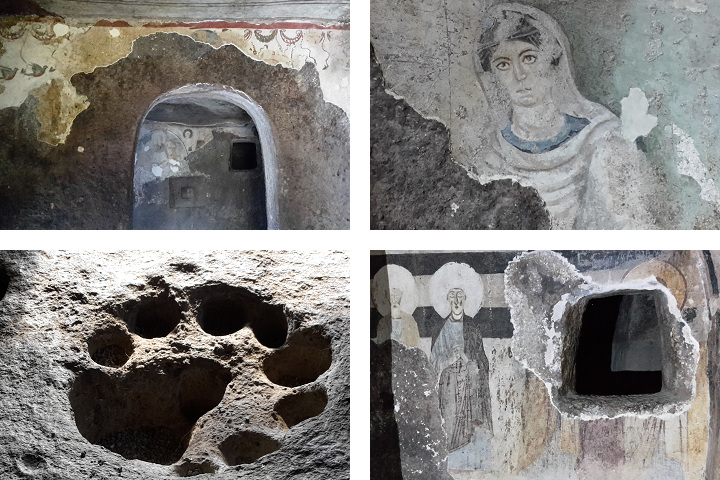
There are instead frescoes and decorations from the Middle Ages, in the next room: religious figures that indicate the use of the structure as a place of worship. In the Middle Ages, the site was in fact consecrated as church dedicated to Sant’Andrea: the three main rooms were used as hall, room of the faithful and presbytery.
The views of the valley
Our visit continues with a walk outside, among the smaller tombs. A path climbs to the top of the rocky ridge; from here we can admire a wide panorama towards the Nuraghi valley.
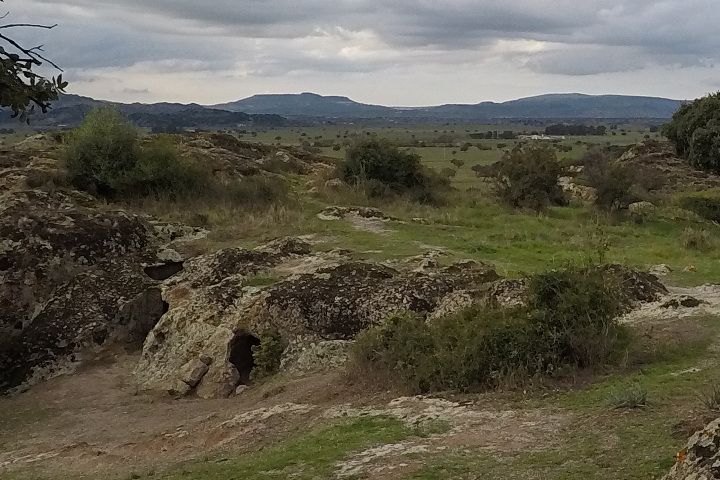
Here we find the ancient prenuragic sculpture, symbol of this necropolis: the sacred bull. It is a monolith in carved trachyte, of which we can recognize the 4 legs, but not the head. The dominant position of the work proves the importance of this figure for the ancient Sardinian populations. And despite the past millennia, this wonderful stone animal still watches over the valley…
